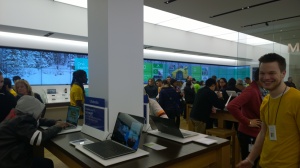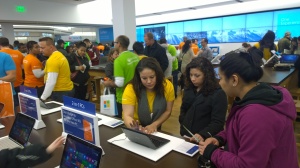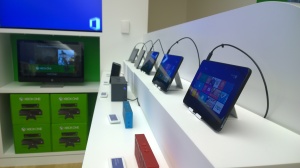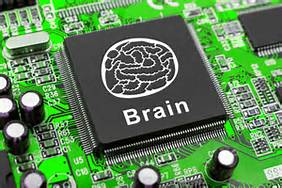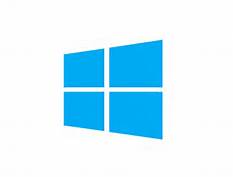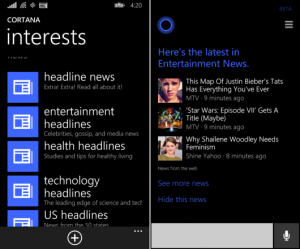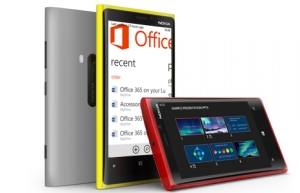What is a PC? Yeah sounds like a rhetorical question doesn’t it? Certainly in 2015, the year Marty McFly surfed around “the future” on a hover board as naturally as we surf the web today in the, uh, present we all know what a PC is. Well yeah you’d think we would all agree. Yet it seems that a simple definition is harder to arrive on than it was for Marty to get Back to the Future. The devil is in the details.
Numbers Don’t Lie – But What Are You Counting?
Recently the research firms IDC and Gartner posted their Q4 numbers regarding PC sales. Gartner reported one number for that period. IDC posted a smaller number. Same period. Same subject. Different numbers. Why?
Windows Central reached out to each firm and got the following. First up Gartner.
“We include Windows tablets, but do not include Chromebooks because we segment the market based on use case. What users can do on Windows tablets and regular laptops/desktops are slimmer. These devices offer high productivity and multiple functionalities. It can run multiple applications and have a good multitasking capability regardless of form factor. For instance, Windows tablets can be used as a “desktop” by attaching an external monitor and a keyboard.”
“On the other hand, Android and iOS tablets do not have functionalities that PCs can offer. It has limited multitasking capability, and its primary purpose is content consumption. Chromebooks look like a laptop, but what a user can do on Chromebook is also limited. Lack of offline capability, especially, makes Chromebook as a “lesser” functional device compared to the ‘PCs.'”
“Thus, we think that discussing the market by form factor is not relevant. Especially since some laptops now have tablet functionalities such as detachable laptops and bendable laptops (=hybrid). These are tablet and PC all in one device (2-1s). If we segment the market by form factor, it would be hard to define such product in the market.”
Next up – IDC.
“We made a decision to align the taxonomy along physical form factor (i.e. notebook PCs need to have non-detachable keyboards) rather than along an operating system-centric point of view or use-case scenarios. Hence, while we exclude 2-in-1s like the MS Surface Pro, we do include Chromebooks, which have a hard-wired keyboard, in the PC volume.”
To Be a PC or Not to Be a PC That is the Question
Well there’s the skinny on how each firm categorizes what a PC is. I’m sure that we all have our opinions on how to define a PC or Personal Computer. Yeah, abandoning the abbreviation for a moment and to simply call it what it is does ignite many thoughts doesn’t it? Personal computer.
Personal: of, affecting, or belonging to a particular person rather than to anyone else.
Computer: an electronic device for storing and processing data, typically in binary form, according to instructions given to it in a variable program.
Yes I realize that if we were to take the broadest and most liberal of definitions we’d be counting, as PCs, devices ranging across a very wide and very impractical scope. Let’s not go there. However, history is often a great and reliable teacher. So let’s, instead, briefly go there.
Historically, the definition of a personal computer (PC) combined the two definitions above into this precise, concise and everything nice definition: a computer designed for use by one person at a time. Simple right? We like simple. But that only gets us part of the way there. Namely because wrapped neatly within that definition is a key factor to consider when trying to arrive at how we should (or at least could) define a PC or personal computer today. Yes a PC is defined as a computer designed to be used by one person at a time, but how is it used is the $64,000 question? Yes, use is key and history has something to say on that.
Back to the Past – No You Won’t Need a Flux Capacitor
So how was a personal computer historically used? Sure, what did we do with those personal high-powered computing devices of ours?
Well we were productive with them. We wrote reports, organized data, conducted research, created presentations, music, art and so much more. Productivity/Content Creation
We also used them for communication. We chatted, sent emails, and conducted video calls and more. Communication
Let’s not forget the fun stuff. We surfed the information super-highway, uhhh…the Web or the internet, listened to music, watched movies and videos and of course we played games. Media Consumption/Entertainment
So our personal electronic devices, designed to be used by one person at a time that stored and processed data, (typically in binary form) according to instructions given to it in a variable program was historically used for productivity, content creation, communication, media consumption and entertainment. Hmmmm. A PC. What devices fit that description today?
Before we run off, in the direction I know at least some minds have already ventured, allow me to wrap a bow around this. So if we were to take the definition of a PC and temper it with how we have historically used PCs we have a fairly solid definition of a PC which is not restricted or confined to the parameters of any particular form factor. Thank you.
Okay. Now I’d like to share the following which I originally posted as a comment on a Windows Central article about the differing Gartner and IDC numbers.
IDC – I Don’t See What You See
“I really believe tablets (hybrids) with detachable keyboards should be included in IDCs numbers. The 2-in-1 form factor is the direction Microsoft, with its “hybrid OS”, is directing the market. Many OEMs have appropriately adopted hardware designs that fit with that vision. Numbers that fail to include those hybrid form factors in my opinion are retaining what is becoming an archaic view of what a PC is.
The industry is moving away from the “legacy” view of a PC as strictly a device with a desktop or laptop form factor. Consumers are using PCs more and more in a mobile fashion. Windows 8(10) and apps (programs) are increasingly designed for mobile AND static interaction. This must be acknowledged as a true and legitimate paradigm shift in what is categorized as a PC.
IDC will likely be forced to change its methods as it becomes progressively clearer that a PC is ALSO a hybrid device as the increasingly mobile computing consumers purchase more and more of these devices made by more and more OEMs at accessible price points and a diverse range of forms and capabilities in the coming year.
The last quarter of 2014 was promising with a range of low priced Windows tablets and hybrids. And CES2015 gave a great foreshadow of what we can expect from OEMs on the Windows front with hybrid devices.
I believe that Microsoft was successful with the Surface Pro 3 acting as an aspirational device for OEMs. Many OEMs have taken the torch and are running with high quality devices that will really showcase the benefits of Microsoft’s OS, especially Windows 10. IDC, may be just a tad short sighted, or they may just be waiting for the wave to hit. Either way I am confident they will be changing the way they measure PC sales in time.” (originally posted by me on John Callaham’s Windows Central Article: “Gartner Reports PC Shipments Went Up in Q4 2014, but IDC Says Otherwise” – January 14, 2015 11:11:35)
So in a nutshell, the humble view of this happy blogger is that a PC (personal computer) is any computing device, regardless of form factor, designed for use by one person at a time that allows said user to perform all of the historic PC functions of productivity, content creation, communication, media consumption and entertainment (and any additional tasks that extend that basic functionality).
So though the IDC excludes devices that have detachable keyboards, as stated above, I contend those devices are and will increasingly be recognized as PCs as they begin to be occupy a larger part of the market.
THE END
…..well, no…I can’t… Yeah. I’ll go there….the place I alluded to some of you readers already going. Smartphones
Too Smart for Their Own Good
One, we know that our mobile devices though still carrying the moniker phone are no longer simply phones and the device that term historically describes. (A device that was primarily used to hold two way verbal communication between two-or more – parties) It is arguably true that the term smartphone is also inadequate to define what our mobile devices are now in 2014.
In fact it is true that our devices have far more in common with what we have defined as “personal computers” than what we may classify as a phone of any type. Our devices have memory (8GB-128GB in most cases), RAM (1GB-2GB in most cases), many have expandable storage slots, high end displays, they run programs, they are productivity tools, content creation tools, communication devices, media consumption tools, entertainment devices, always internet connected and much more. If that description were given to someone 20 years ago – they would swear up and down that you just described a personal computer.
So what am I saying? What we call our smartphones are, in all actuality, pocket sized personal computers with telephony functionality. With the added benefit of their “extra appendage” status, mobility and being constantly internet connected they’ve even outpaced traditional PC’s in the Personal Digital Assistant arena. “Hey Cortana, Hey Siri, Ok Google Now – What is a PC?”









